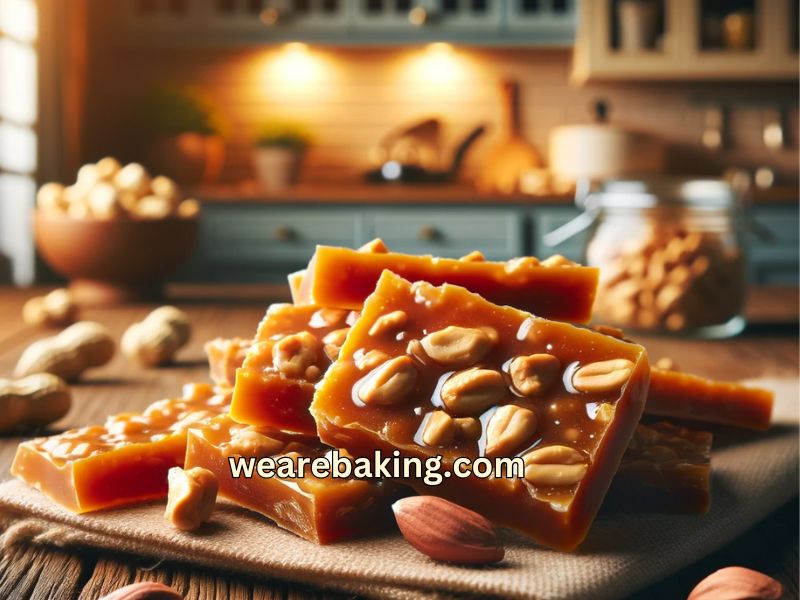Peanut brittle, that classic, sweet, and crunchy delight. But, there always seems to be a but… Have you ever bitten into this sweet confection and not gotten that satisfying crunch you were expecting? Instead, you are asking yourself, “Why is my peanut brittle chewy?” The number one reason for chewy peanut brittle is undercooking the sugar mixture, but there are a few more factors to consider.
In this post, we’ll explore the world of peanut brittle, examine why it can sometimes end up chewy, and provide advice to guarantee that your next batch comes out with the perfect crunch. Whether you’re a beginner in the kitchen or a seasoned cook, this guide will help you master the secret to flawless peanut brittle.
Affiliate Disclosure: Some of the links below are affiliate links, meaning at NO additional cost to you. I may earn a small commission if you click through and make a purchase. See full disclosure here:
“What Makes Peanut Brittle ‘Brittle’?”
Peanut brittle’s unique texture is a mix of art and science. It’s all about combining sugar, corn syrup, and peanuts and heating them just right. When you cook this mix, the sugar caramelizes, transforming from a sticky goo to a hard, crunchy candy. You don’t need fancy equipment – just a heavy saucepan, a candy thermometer, a baking sheet, and some patience.
Why Is My Peanut Brittle Chewy?

Sometimes, making peanut brittle can go a bit wrong, and you end up with a chewy mess. Let’s look at why:
- Undercooking the Sugar: One of the main reasons your peanut brittle might be leaning more towards chewy than crunchy is undercooked sugar. When sugar doesn’t reach the right temperature, it fails to crystallize properly. This incomplete crystallization is what gives you a texture that’s more taffy than brittle. It’s like pulling your cake out of the oven too soon – it just won’t be right.
- Humidity: The weather outside can play a surprising role in your baking adventures. High humidity is a notorious culprit for chewy peanut brittle. Moisture in the air can prevent the sugar from setting correctly, leading to a softer, stickier texture. It’s similar to trying to sun-dry your laundry on a damp day – things just don’t turn out as expected.
- Wrong Ingredient Mix: Getting the right balance of ingredients is very important. Too much corn syrup can make your brittle too chewy, while too little sugar can prevent proper crystallization. Think of it as mixing the perfect cocktail – the right proportions of each ingredient make all the difference. Experiment with small batches to find the perfect balance for your taste and texture preferences.
- Stirring the Mixture Excessively: Stirring your peanut brittle mixture too much can also lead to chewiness. Over-stirring encourages the formation of sugar crystals, which can make your brittle-grainy and chewy. It’s a bit like over-kneading bread dough; too much handling can change the texture entirely.
As an Amazon Affiliate, I may earn a commission from qualifying purchases.
Tips for the Perfect Crunch
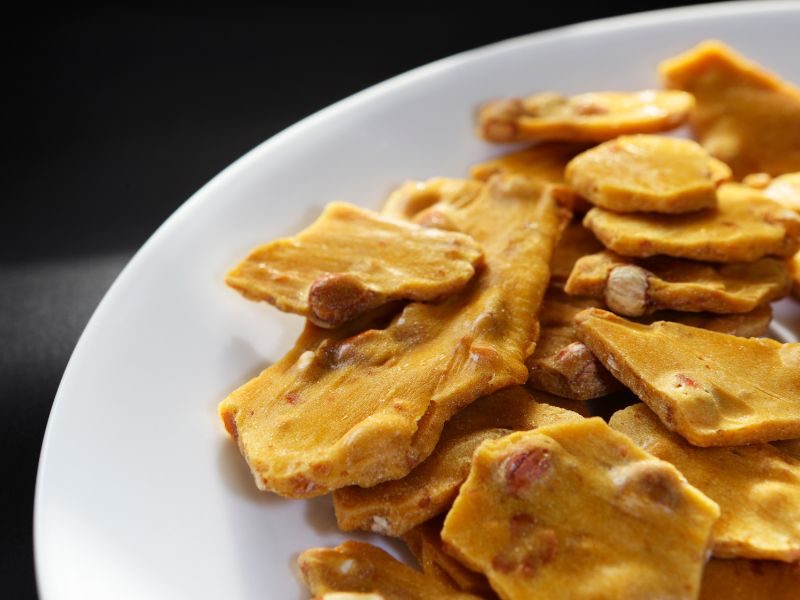
Now, here’s how to nail that perfect brittle crunch:
- Temperature: Getting the right texture in peanut brittle is all about cooking it to the right temperature. Your aim is the hard crack stage, which is 300 to 310 degrees. Even a few degrees can make a difference between a hard crack and a soft crack stage. This is why a candy thermometer is an absolute must. It is your best friend when making any kind of candy. It’s not a guessing game when you think the looks right. The temperature needs to be accurate.
- Check Your Thermometer: Make sure your thermometer is accurate. To check for accuracy, insert the thermometer into a pan of boiling. The reading should be 212 degrees.
- Use the thermometer the right way: Immerse the thermometer into the candy mixture completely, but make sure it does not touch the bottom of your pan. I use the traditional candy thermometer that stays in the mixture the whole time. But some swear by this thermometer.
- Mind the Humidity: Humidity plays a sneaky role in candy-making. High humidity can mess with sugar crystallization, leading to a softer, chewier candy. On humid days, you might need to cook the sugar a bit longer to account for the moisture in the air.
- Measure Carefully: Follow the recipe carefully and measure your ingredients correctly. It is helpful to have all your ingredients measured and ready to go before starting the cooking process. I usually measure my sugar mixture into my pan, and before I turn the heat on, I have my other ingredients measured and ready.
- Stir Gently: While it might be tempting to stir the mixture constantly, over-stirring can lead to sugar crystallization. This crystallization can make your brittle, grainy, and chewy. It is best to stir only when necessary and as gently as possible.
Storing Your Brittle
Proper storage is key to maintaining the texture of your peanut brittle. Once it’s cooled and set, store it in an airtight container in a cool, dry place. If you’re in a humid climate, consider adding a piece of bread to the container to absorb any excess moisture. This will help keep your brittle crisp and delicious for longer. Think of it as preserving the freshness of homemade cookies – the right storage makes all the difference.
Ready to Try?
This recipe is my all-time favorite. It works every time, and my husband loves it. If you’re not a fan of peanuts, try using cashews. Give it a go, and enjoy making (and eating) your perfect peanut brittle!
Peanut Brittle Recipe
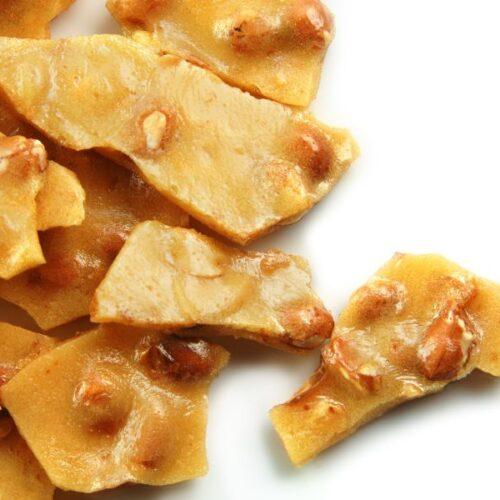
Peanut Brittle
Ingredients
- 2 cups sugar
- 1 cup light corn syrup
- 1/2 cup water
- 1/4 teaspoon salt
- 1 cup butter, cut into slices
- 2 1/4 cups peanuts
- 1 teaspoon baking soda
Instructions
- Measure the sugar, corn syrup salt, and water into a heavy bottom sauce pan
- Cook over medium heat, stirring constantly until the sugar has dissolved and the mixture comes to a boil.
- Add the butter and continue cooking, stirring occasionally until your candy thermometer reaches 280 degrees.
- Add the peanuts and cook until the thermometer reaches 305 degrees.
- Remove from the heat and stir in the baking soda.
- Pour the mixture into a greased baking sheet and spread to ¼ inch thick.
- Cool completely
- Break into pieces.
- Store in an air tight container
- Enloy!

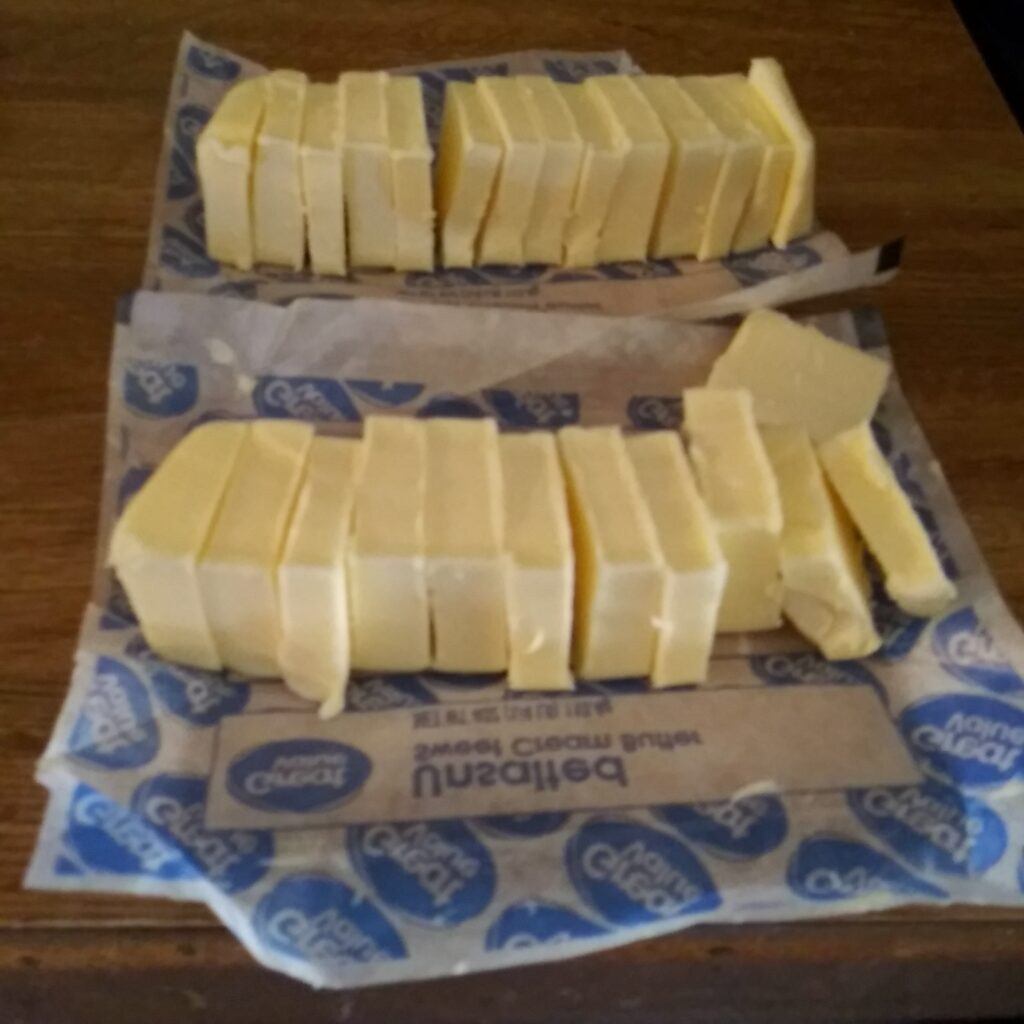
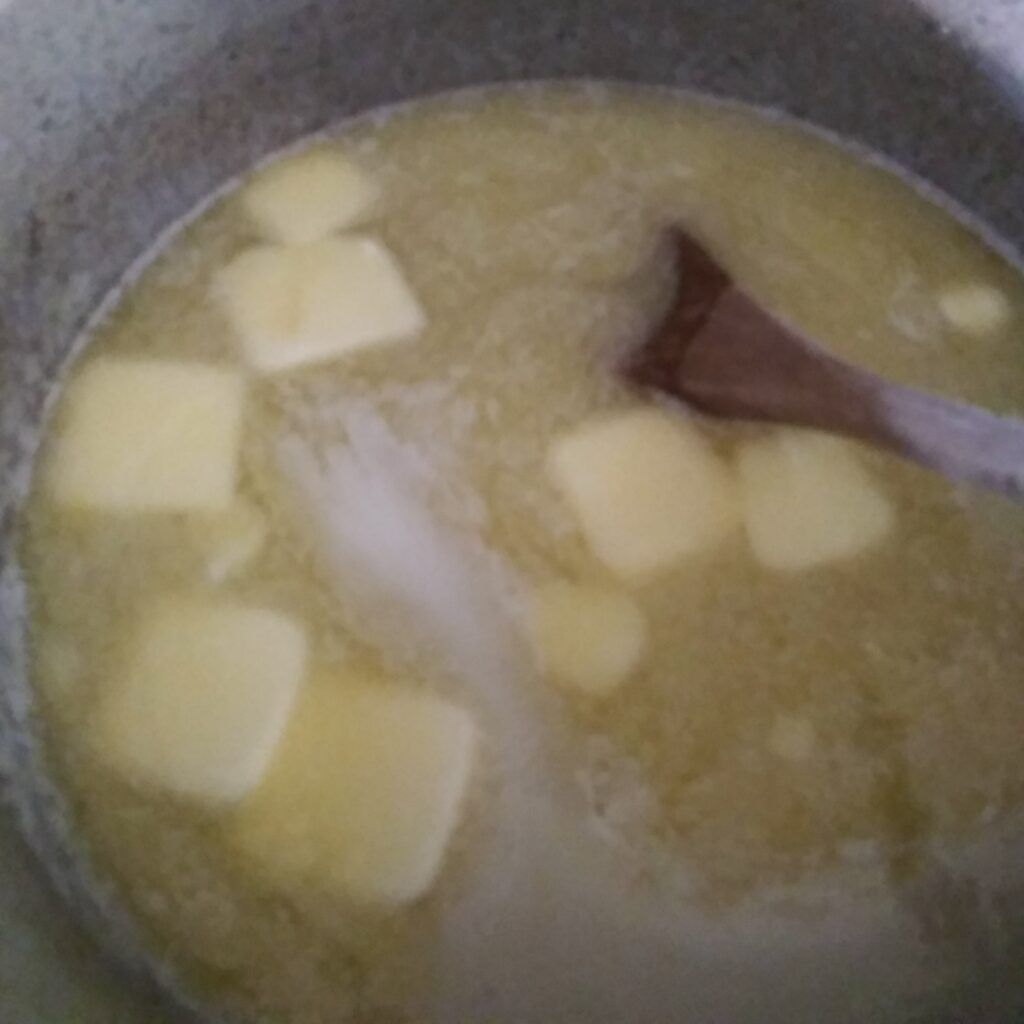



My favorite baking pan to use when making peanut brittle is the Nordic ware half-sheet baking pan. Instead of greasing the pan with butter, I use a silicone mat. It is so much easier, and there is no messy cleanup.
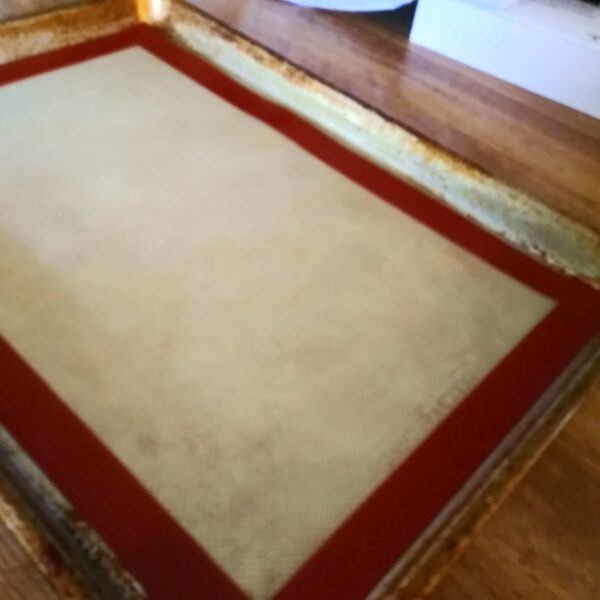
Final Thoughts
Peanut brittle, with its delightful crunch and sweet taste, is more than just a treat—it’s a testament to the art of candy making. As we’ve explored, achieving that perfect brittle texture hinges on precision and patience, from cooking the sugar mixture to the right temperature to considering the humidity in your kitchen.
Remember, making peanut brittle isn’t just about following a recipe; it’s about understanding the science behind the process. The right temperature, the balance of ingredients, and the way you stir the mixture all contribute to creating that ideal brittle texture. So, don’t be discouraged if your first batch doesn’t turn out perfect. Candy-making is as much about learning and experimenting as it is about the end result.
Are you having problems with your divinity candy? Read this article.
Has your peanut brittle turned out chewy? Please leave a comment below
And As Always
Keep On Baking!
Taianne
Share the Love
FAQ Section: Understanding and Perfecting Your Peanut Brittle
Peanut brittle, a beloved confection, often raises questions about its texture and preparation. Whether you’re a seasoned cook or a first-timer, understanding the nuances of making peanut brittle can help you achieve that perfect crunch. Below, we address some of the most common questions that arise when making this sweet treat.
Q1: Is there a way to fix chewy peanut brittle?
A1: Yes, chewy peanut brittle can often be fixed. This usually happens when the sugar syrup hasn’t reached the hard crack stage. To remedy this, reheat the brittle gently until it reaches 300°F (149°C), ensuring it achieves the necessary hardness.
Q2: What happens if you overcook peanut brittle?
A2: Overcooking peanut brittle can lead to a bitter taste and a dark color due to the caramelization of sugar. It might also become too hard, making it difficult to chew. Keeping a candy thermometer handy and monitoring the temperature closely can prevent overcooking.
Q3: Why does my peanut brittle get sticky?
A3: Sticky peanut brittle is often a result of humidity or undercooking. Moisture in the air can make the brittle, chewy, and sticky. To avoid this, ensure your brittle reaches the hard crack stage and store it in an airtight container in a cool, dry place.
Q4: Why put baking soda in peanut brittle?
A4: Baking soda is added to peanut brittle to create tiny air bubbles when it reacts with the acidic components in the syrup. This reaction makes the brittle lighter and more porous, giving it a delightful crunch and preventing it from being too hard.

I’m Taianne, the owner and operator behind We Are Baking. Baking my first cake at age 11 hooked me on creating sweet treats. Though my interest faded during childhood, it was rekindled when I married my apple pie-loving husband. I love trying new recipes, tweaking classics, and helping others learn the science and art of baking. I started We Are Baking to share tips, tricks, and favorite recipes I’ve discovered over the years. When not in the kitchen, I enjoy spending time with family and friends. My goal is to inspire others to embrace their creativity through baking. Feel free to contact me with any questions!
Taianne@wearebaking.com

